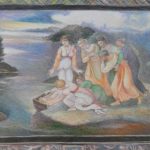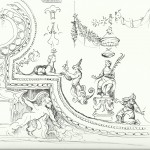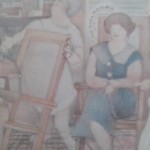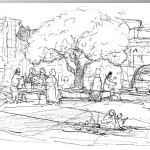 Hanya Yanagihara’s A Little Life is the equivalent of literary waterboarding: Be prepared for an onslaught of descriptions that will leave you in a state of perpetual despair. Although critically acclaimed, and with good reason, there are questions about this novel that are too great to overlook. The most pressing one is whether a foundling can suffer for fifteen years without encountering one righteous, empathetic, astute human being….someone who could detect the terrifying circumstances the main character, Jude St. Francis, endures and barely escapes. And then, how is it that his destiny is so completely upended by the good fortune of friendship and love? This is the balance on which everything in A Little Life depends. But, in the end, no amount of kindness and compassion can undo the gravity of the harm inflicted on Jude. (SPOILER ALERT: If you have not finished the book, you may want to wait before reading the rest of this blog.)
Hanya Yanagihara’s A Little Life is the equivalent of literary waterboarding: Be prepared for an onslaught of descriptions that will leave you in a state of perpetual despair. Although critically acclaimed, and with good reason, there are questions about this novel that are too great to overlook. The most pressing one is whether a foundling can suffer for fifteen years without encountering one righteous, empathetic, astute human being….someone who could detect the terrifying circumstances the main character, Jude St. Francis, endures and barely escapes. And then, how is it that his destiny is so completely upended by the good fortune of friendship and love? This is the balance on which everything in A Little Life depends. But, in the end, no amount of kindness and compassion can undo the gravity of the harm inflicted on Jude. (SPOILER ALERT: If you have not finished the book, you may want to wait before reading the rest of this blog.)
One of the challenges for this reader is whether it is truly possible that all the Brothers in the monastery are cruel, that all the counselors and boys in the group home are sadistic, that every trucker can look beyond the boy sitting beside him and see only sexual exploitation? And finally, how is it possible that after all of this, Jude winds up imprisoned by the most cruel of all men, the ostensible psychiatrist Dr. Traylor, who after destroying his spirit and soul, crushes his body with his car? Any one of the aforementioned circumstances would have broken Jude, but why the piling on of victimization? What is the author’s point in layering abuse after abuse? This is a hard question to answer, but perhaps some clues are found in the penultimate section “Dear Comrade.”
After many cycles of what Jude calls a ‘piece of pantomime,’ in which he is coerced into eating, sleeping, and pretending that he wants to live, the big question of the novel finally comes into focus. Jude asks: “He had always wondered why he, why so many others, went on living at all; it had been so difficult to convince himself at times, and yet so many people, lived in misery he couldn’t fathom, with deprivations and illnesses that were obscene in their extremity. And yet on and on they went. So was the determination to keep living not a choice at all, but an evolutionary implementation? Was there something in the mind itself….that prevented human from doing what logic so often argued they should? And yet that instinct wasn’t infallible–he had overcome it once. But what happened to it after? Had it weakened or become more resilient? Was his life even his to choose to live any longer?”
So, while A Little Life is hard to bear (and at times perhaps a bit long-winded), its themes are profound. This is a great novel about the impact of cruelty and the reality that there are hopeless cases. But, A Little Life reminds us, as Willem says before he dies, “I know my life’s meaningful because I’m a good friend. I love my friends, and I care about them, and I think I make them happy.”
For discussion questions click here:Â https://whatsmartwomenread.com/books/a-little-life/


